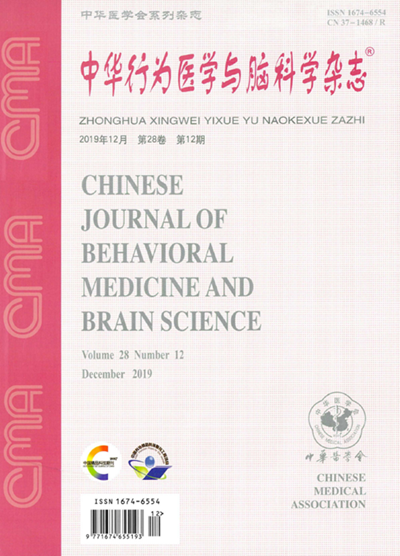The qualitative study of disease cognition, treatment compliance and community services evaluation of community patients with schizophrenia, family members and disease control personnels
引用次数: 0
Abstract
Objective To investigate the evaluation of disease perception, treatment compliance and community follow-up services of community schizophrenia patients, family members and personnel in Shantou City, and to provide a reference basis for improving the quality of management treatment. Methods With the method of stratified sampling qualitative research, a community sample of 17 198 patients with schizophrenia in seven districts or county in Shantou City were sampled from February to August 2019, with 2 towns being drawn from each district or county, and 10 patients, 10 family members and 3 personnel were selected in each town. The evaluation of disease perception, treatment compliance and community follow-up services were investigated and analyzed. Respondents were eventually included in 137 patients, 138 family members and 41 personnel.The interviewees were conducted with semi-structured interviews, the data were collected according to traditional methods, and the descriptive statistical analysis was carried out with SPSS 12.0. Results (1)34.3% of patients and 32.6% of the family members were not fully aware of the disease.22.6% of the patients and 23.2% of the family members had a sense of ill shame. (2)26.3% of patients did not comply with treatment, 29.9% of patients had not insight, 53.3% of patients and 24.6% of family members on the side effects of drugs and addiction understood improperly, and, 35.0% of patients and 13.0% of the family had a misunderstanding of illness and using drugs. (3)29.2% of patients and 31.2% of their families were tired of taking long-term medication, 24.8% of patients and 21.0% of their families felt socially isolated, and, 17.5% felt unsupported and 18.8% of their families admitted that they did not care enough about patients. (4)31.4% of patients did not actively receive follow-up services, 37.2% of patients and 20.3% of family members did not cooperate with follow-up doctors, and, 21.2% of patients and 10.1% of family members were not satisfied with follow-up services. (5)The personnel of psychiatric care could basically grasp the conditions of patients in the jurisdiction and carried out follow-up services on a regular basis (90.2%), master emergency disposal methods (92.7%), and have carried out training (97.6%). However, the psychiatric practice of the personnel were lower than (58.5%) and most lying part-time (78.0%), the average length of service was 5.7±1.4 years. The personnel satisfaction with the community follow-up service was higher (95.1%), but most of them thought that the psychiatric care was more difficult (36.6%), and were dissatisfied with the multi-functional staff to undertake a number of public services (31.7%). Conclusion The management treatment project of mental disorders services in Shantou City show initial results.The patients were satisfied with the community follow-up service, but the patients and their families still have low level of cognition, poor compliance, obvious negative emotions, and have concerns about drug treatment.It is necessary to strengthen the professionalization of personnel, to carry out early mental health education and rational emotional behavior training for patients and their families. Key words: Schizophrenia; Disease cognition; Therapeutic compliance; Community management; Qualitative research社区精神分裂症患者、家属及疾病控制人员疾病认知、治疗依从性及社区服务评价的定性研究
目的了解汕头市社区精神分裂症患者、家属及工作人员的疾病认知、治疗依从性及社区随访服务情况,为提高管理治疗质量提供参考依据。方法采用分层抽样定性研究方法,于2019年2月至8月抽取汕头市7个区县的17198名精神分裂症患者为社区样本,每个区县抽取2个乡镇,每个乡镇抽取10名患者、10名家属和3名工作人员。对疾病认知、治疗依从性和社区随访服务的评价进行了调查和分析。受访者最终包括137名患者、138名家庭成员和41名工作人员。受访者采用半结构化访谈,数据按传统方法收集,采用SPSS 12.0进行描述性统计分析。结果(1)34.3%的患者和32.6%的家庭成员对该疾病没有充分的认识,22.6%的患者和23.2%的家庭成员有恶感。(2) 26.3%的患者不遵守治疗,29.9%的患者没有洞察力,53.3%的患者和24.6%的家庭成员对药物的副作用和成瘾理解不当,35.0%的患者和13.0%的家庭对疾病和用药有误解。(3) 29.2%的患者和31.2%的家人厌倦了长期服药,24.8%的患者和21.0%的家人感到社交孤立,17.5%的患者和18.8%的家人承认他们对患者不够关心。(4) 31.4%的患者没有积极接受随访服务,37.2%的患者和20.3%的家属不配合随访医生,21.2%的患者和10.1%的家属对随访服务不满意。(5) 精神科护理人员基本能够掌握辖区内患者的病情,定期开展随访服务(90.2%),掌握应急处置方法(92.7%),并进行过培训(97.6%),但精神科执业人员低于(58.5%),大部分为兼职(78.0%),平均服务年限为5.7±1.4年。工作人员对社区随访服务的满意度较高(95.1%),但大多数人认为精神病护理难度较大(36.6%),对多功能工作人员承担多项公共服务不满意(31.7%)。患者对社区随访服务满意,但患者及其家属认知水平仍较低,依从性差,负面情绪明显,对药物治疗有顾虑。要加强人员专业化,对患者及其家属进行早期心理健康教育和理性情绪行为训练。关键词:精神分裂症;疾病认知;治疗依从性;社区管理;定性研究
本文章由计算机程序翻译,如有差异,请以英文原文为准。
求助全文
约1分钟内获得全文
求助全文
来源期刊
自引率
0.00%
发文量
8131
期刊介绍:
"Chinese Journal of Behavioral Medicine and Brain Science" (CN 37-1468/R, ISSN 1674-6554) is a national academic journal under the supervision of the National Health Commission, sponsored by the Chinese Medical Association and Jining Medical College. The journal was founded in June 1992 and was formerly known as "Chinese Journal of Behavioral Medicine" (1992-1993) and "Chinese Behavioral Medical Science" (1994-2008). In 2009, it was renamed "Chinese Journal of Behavioral Medicine and Brain Science" with the approval of the State Administration of Press, Publication, Radio, Film and Television.
The purpose of "Chinese Journal of Behavioral Medicine and Brain Science" is to implement the health and health policies of the Party and the State, implement the principle of combining theory with practice and popularization and improvement, and reflect the major progress in the theory and practical application of behavioral medicine and brain science in my country. It publishes academic papers and scientific research results in the field of behavioral medicine and brain science in my country, and has columns such as monographs/reviews, basic research, clinical research, health prevention, methods and techniques, psychological behavior and evaluation, and systematic evaluation.

 求助内容:
求助内容: 应助结果提醒方式:
应助结果提醒方式:


